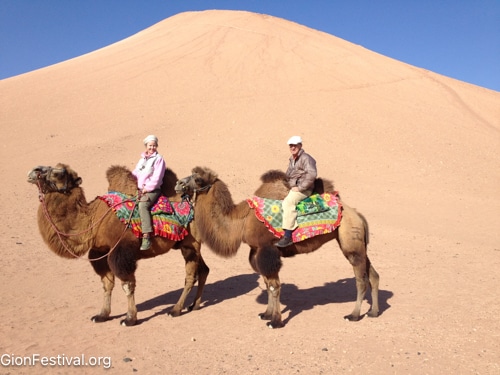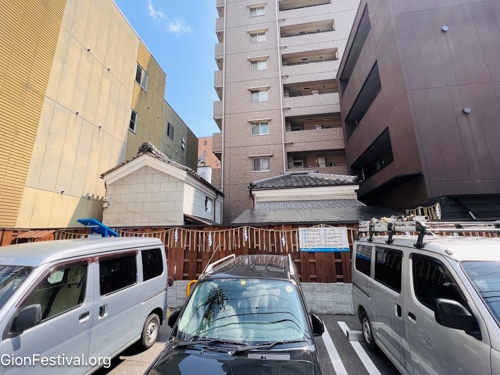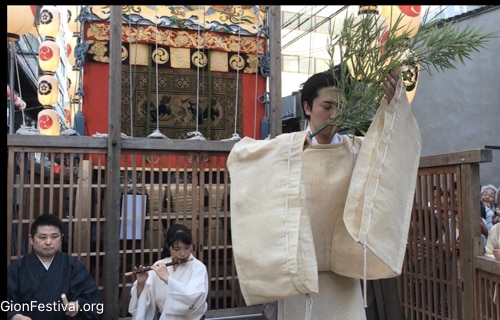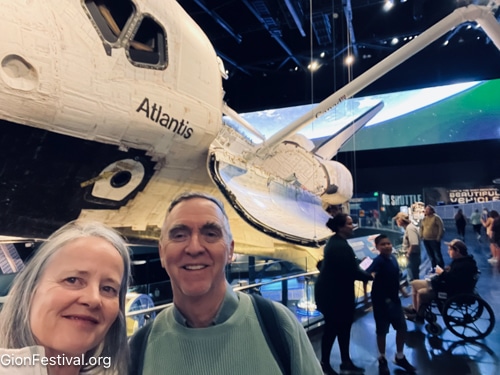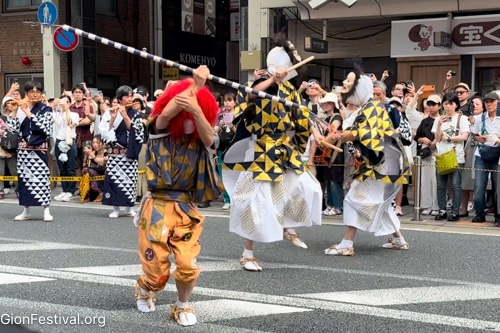
Ayagasa Boko‘s dance and music relate to ancient music and dance for the spirits of the dead.
Kyoto’s Gion Festival is very much about life and death. How so? The Gion Matsuri provides a framework for participants to connect with the supernatural world. And thereby better appreciate our daily life.
Some Gion Festival participants pray for the spirits of those who have died (similar to Japan’s Obon holiday in August). In particular, historically, people prayed to the Gion Festival deities to help humans survive Kyoto’s rainy season.
Until penicillin came to Japan in the 1950s, the month-long rains led to standing water, flooding, and hygiene-related sicknesses. Before modern medicine, summer deaths were not unusual. Summer rains made for a fearful season.
The irony about death hovering so close is that it helps us better appreciate life’s preciousness.
Death of a Dear One
In this spirit of appreciating life, I share the news of the death of my spiritual mentor and life partner, Doug “Qapel” Duncan. He died suddenly in early October at the age of 75.
I studied, lived, and worked with Qapel for 26 years. Together we founded and developed Clear Sky, a retreat center in British Columbia, Canada, with many fellow practitioners, supporters, and friends in 2004.
But we first met in Kyoto in 1998, and spent happy years there together. I was living there already, working as a writer, translator, and editor. Two of Qapel’s students had invited him from the Dharma Centre of Canada to Kyoto to teach Buddhist philosophy and meditation.
Left: Qapel generously shared a joyful spirit.
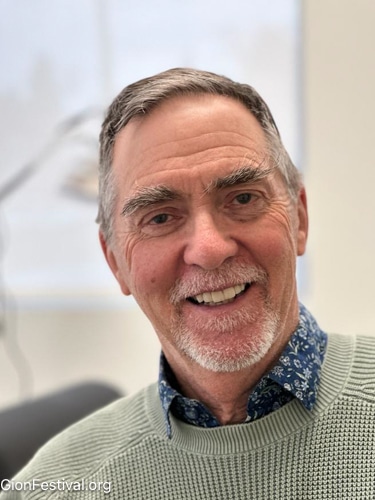
Qapel’s Influence on My Gion Festival Work
Qapel was a steadfast supporter of my work with the Gion Festival. This is especially remarkable since the Gion Festival and I have had a decades-long affair. Supporting my Gion Festival projects has been a long game, requiring much patience.
After all, I’ve devoted many hours of time and energy, regular trips to Kyoto, and financial means to the Gion Matsuri. And these were all resources I could have been spending on our beloved retreat center, our teachings, or together with our conscious community.
Nonetheless, Qapel seemed to understand that it was valuable—in ways that are not always clear, even to myself—and consistently cheered me on. May we all enjoy such generosity of spirit!
As my spiritual mentor, co-teacher, and partner, Qapel helped shape my approach to the Gion Festival as a spiritual experience.
When I first met the Gion Festival in the early 1990s, and even now, most of its one million visitors treat it like a tourist event. Why not? The festival features extraordinary street food, people watching, unique and beautiful traditional costumes, music and dance, and breathtaking treasures adorning its festival floats.
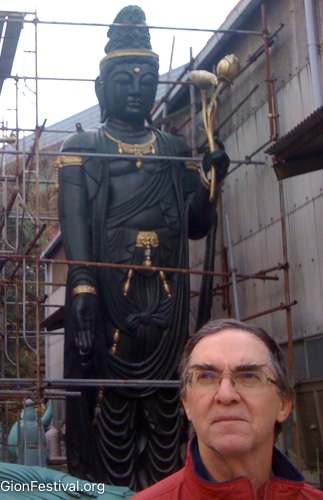
Our teachings emphasize exploring this amazing universe we live in, to open our minds and hearts to greater understanding.
Tourist Event? Or Spiritual Experience?
At the same time, visitors and participants alike suffer from the festival features: The extreme July climate, the crowds, and the demands of a festival that goes all day, every day, relentlessly for a month. It’s an ascetic practice. Each year, it wears away my ego defenses until the boundaries between this world and the supernatural feel worn away, too.
Over the decades of my fieldwork in the Gion Festival, I came to appreciate some fundamental similarities with my training in meditation and spiritual awakening from Qapel. Buddhist philosophy and Himalayan practices abound in shamanic-like elements. The Gion Festival is about connecting this material world of our daily lives with other realms, in which dwell deities, nature spirits, and spirits of those who have died. Teachings and trainings from Qapel gave me the confidence to open up to this side of the Gion Matsuri. (I share more about this in my Gion Matsuri book.)
Buddhist philosophy and all the world’s wisdom traditions urge us to remember that everything is impermanent. Gion Festival floats and neighborhoods have been built, burned in massive historical fires, and rebuilt. I’ve developed beautiful friendships with Gion Festival community members; amidst many joyful moments spent together, we’ve also watched and lamented the traditional Gion Festival architecture and cityscape get replaced by hotels and apartment buildings. Like those traditional homes and businesses fading away, of course, over the decades, some of my friends have died. Now my partner has too. I’ll die, too, not so many years from now.
Life, Death, the Gion Festival, and Spiritual Transformation
Nowadays in the Gion Matsuri neighborhoods, construction companies are building cityscapes with traditional facades. Sometimes, I meet my Gion Festival friends’ children and grandchildren. We’re all part of a never-ending cycle of life and death, arising and passing away.
Like life and death, the Gion Festival is about spiritual transformation.
What are we here on the planet for?
Qapel taught me that we’re here to be victorious in spirit, to triumph over suffering. Spiritual practices help us better understand the nature of our experience, the nature of being.
Constantly exploring, the wonders of life emerge. We can learn to be wholly content with whatever this life delivers.
Right: Always open to the awesome experiences of our existence: Qapel with monks at their monastery in Ladakh, India.
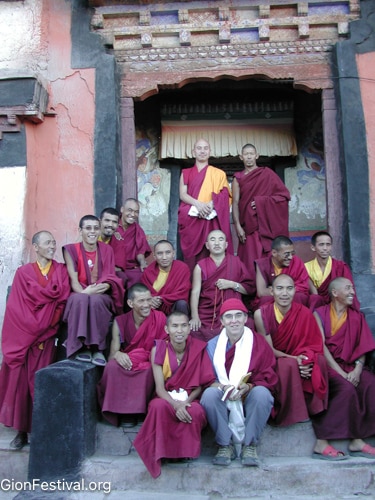
Preparing for Death
What more could we ask for, other than to appreciate every moment of our lives? And in so doing, understand that the death that awaits us all helps heighten the exquisiteness of life.
Many world cultures offer profound teachings regarding the relationships between the living and those who have passed from this life into the beyond. For example, many traditional Japanese noh theater dramas—some of which are featured in the Gion Festival—enact encounters between people and nature spirits, or spirits of the dead. The narrative includes entreaties from the spirits, teaching how we may better live.
All the world’s wisdom traditions address a question: Buddhism, Japanese Shinto, Taoism, shamanism, Islam, etc. The Gion Festival teaches us about this, too. How can we best be ready for this transformation called death?
Life Changes
Now that Qapel has passed away, I’ll take on more of his role as a spiritual teacher at Planet Dharma and in our conscious community at our Clear Sky Retreat Center.
This will affect my involvement with the Gion Festival. I’m happy to have my role as interpreter of the Gion Festival transform, and make room for new contributors.
I wish you the best in your explorations of this extraordinary lens of existence known as the Gion Matsuri. And tell the people you love how you feel. Often!
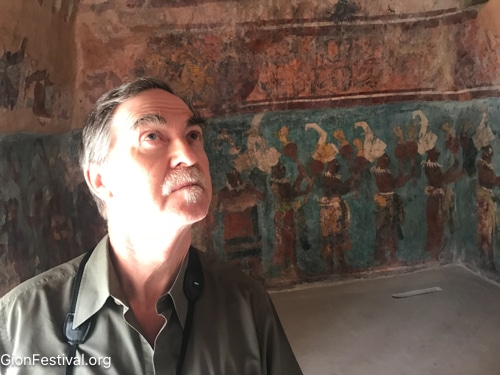
Everything around us is constantly teaching us the secrets of the universe, of life and death. Qapel admiring historic murals in a Mayan temple. Chiapas, Mexico.
Keen to Learn More?
Enjoy the free resources on this site as my gift to you. And know that my book, The Gion Festival: Exploring Its Mysteries, is even better. It’s full of context, history, information on each float, fun facts, tips for your visit, maps, and schedules.
Interested in sharing this content? Check out the Creative Commons Attribution-NonCommercial-ShareAlike 4.0 International License for guidelines on how. These guidelines provide an easy way to grow a culture of generosity, in line with the philosophy of sacred commerce.
